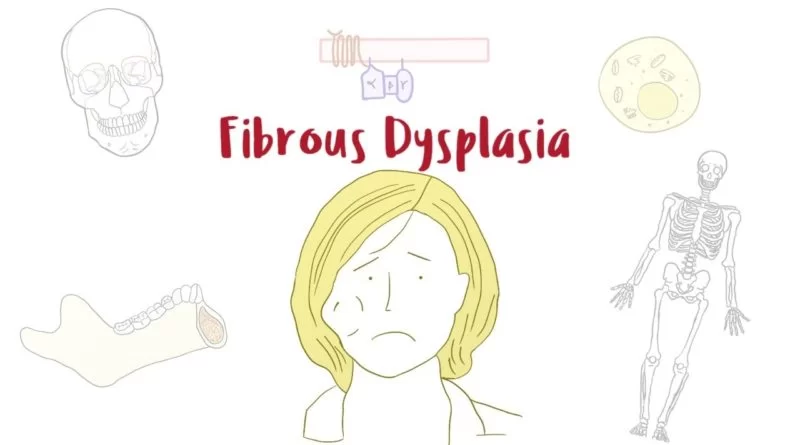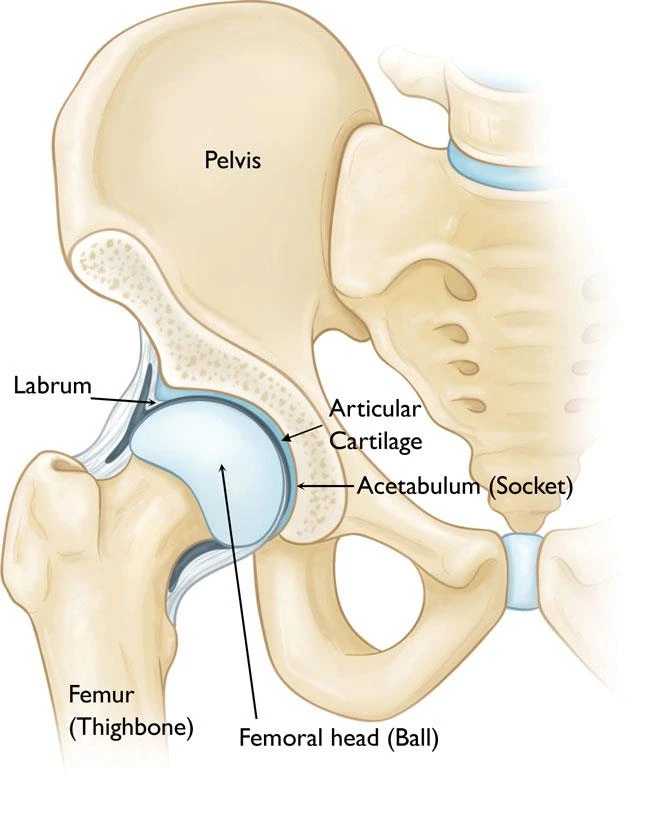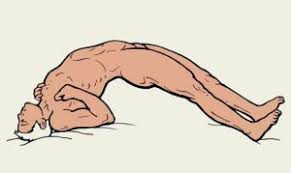Fibrous Dysplasia
Table of Contents
What is Fibrous Dysplasia?
Fibrous dysplasia is a disorder where normal bone and marrow is replaced with fibrous tissue, resulting in the formation of bone that is weak and prone to expansion. As a result, most complications result from fractures, deformities, functional impairment, and pain.
The disease can affect one bone (monostotic) or multiple (polyostotic). Single-bone involvement usually occurs in adolescents and young adults. People who have more than one affected bone typically develop symptoms before the age of 10.

Although fibrous dysplasia is a genetic disorder, it’s caused by a gene mutation that’s not passed from parent to child. There’s no cure for the disorder. Treatment, which may include surgery, focuses on relieving pain and repairing or stabilizing bones.
Fibrous dysplasia is a mosaic disease that can involve any part or combination of the craniofacial, axillary, and/or appendicular skeleton. The type and severity of the complications, therefore, depend on the location and extent of the affected skeleton. The clinical spectrum is very broad, ranging from an isolated, asymptomatic monostotic lesion discovered incidentally, to severe disabling disease involving practically the entire skeleton and leading to loss of vision, hearing, and mobility.
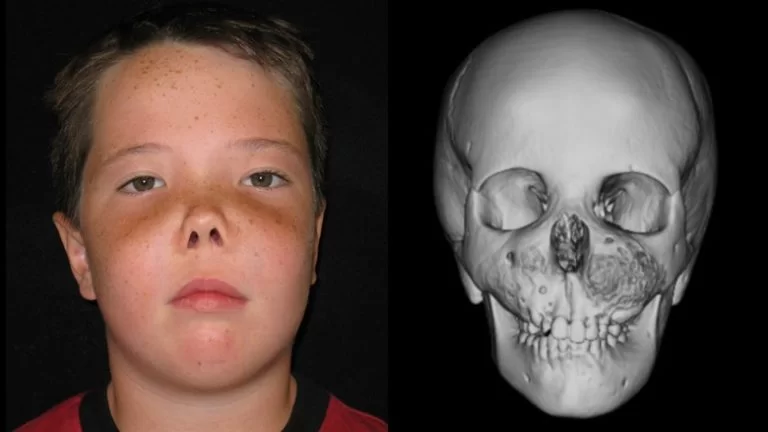
Pathophysiology
Fibrous dysplasia is a mosaic disease resulting from post-zygotic activating mutations of the GNAS locus at 20q13.2-q13.3, which codes for the subunit of the Gs G-coupled protein receptor. In bone, constitutive Gsa signaling results in impaired differentiation and proliferation of bone marrow stromal cells. The proliferation of these cells causes the replacement of normal bone and marrow with fibrous tissue. The bony trabeculae are abnormally thin and irregular and often likened to Chinese characters (bony spicules on biopsy).
Fibrous dysplasia is not hereditary, and there has never been a case of transmission from parent to child.
Causes of Fibrous Dysplasia :
Fibrous dysplasia is linked to a gene mutation present in certain cells that produce bone. The mutation results in the production of immature and irregular bone tissue. Most often the irregular bone tissue (lesion) is present at a single site on one bone. Less often multiple bones are affected, and there may be more than one lesion on multiple bones.
A lesion usually stops growing sometime during puberty. However, lesions may grow again during pregnancy.
The gene mutation associated with fibrous dysplasia occurs after conception, in the early stages of fetal development. Therefore, the mutation isn’t inherited from your parents, and you can’t pass it on to your children.
Symptoms of Fibrous Dysplasia
Fibrous dysplasia may cause few or no signs and symptoms, particularly if the condition is mild. More severe fibrous dysplasia may cause:
- Bone pain, usually a mild to moderate dull ache
- Swelling
- Bone deformity
- Bone fractures, particularly in the arms or legs
- The curvature of leg bones
Fibrous dysplasia can affect any bone in the body, but the most commonly affected bones include the following:
- Femur
- Tibia
- Humerus
- Skull
- Ribs
- Pelvis
Rarely, fibrous dysplasia may be associated with a syndrome that affects the hormone-producing glands of your endocrine system. These abnormalities may include:
- Very early puberty
- Overactive hormone production
- Light brown spots on the skin
Increased bone pain also may be associated with the normal hormonal changes of the menstrual cycle or pregnancy.
Diagnosis
- X-Ray – Bubbly lytic lesion / Ground glass Imaging tests.
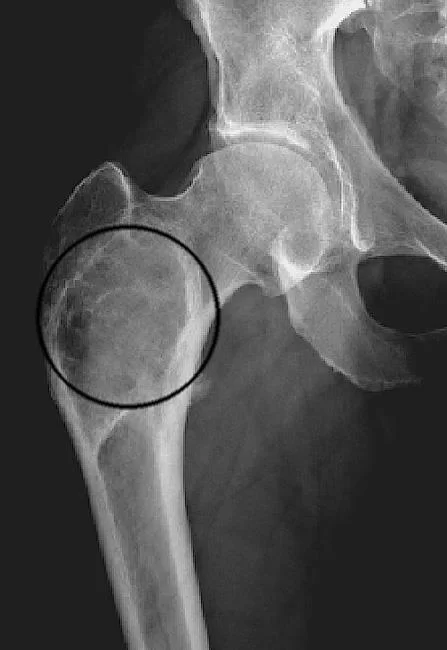
- Computerized tomography or magnetic resonance imaging scans may be used to determine how extensively your bones are affected.
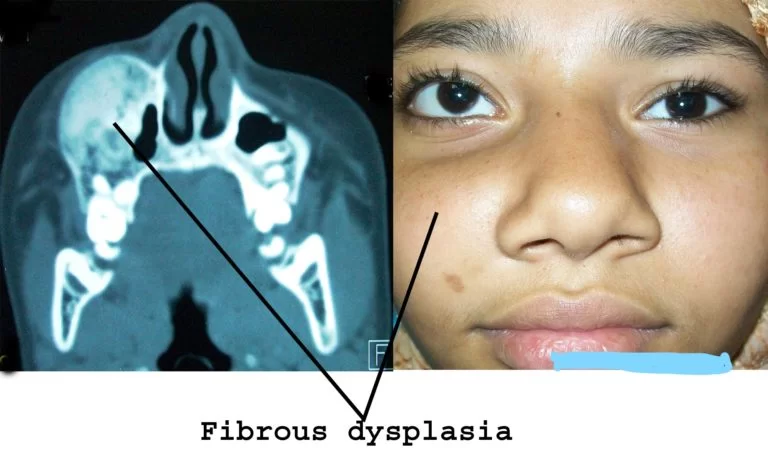
- A bone scan uses radioactive tracers, which are injected into your bloodstream. The damaged parts of your bones take up more of the tracers, which show up more brightly on the scan.
- Biopsy uses a hollow needle to remove a small piece of the affected bone for laboratory analysis.
Complication
Severe fibrous dysplasia can cause:
- Bone deformity or fracture – The weakened area of an affected bone can cause the bone to bend. These weakened bones also are more likely to fracture.
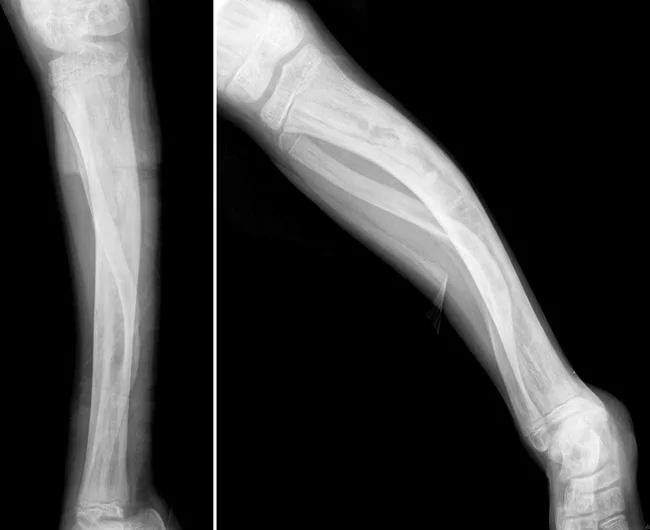
- Vision and hearing loss – The nerves to your eyes and ears may be surrounded by affected bone. Severe deformity of facial bones can lead to loss of vision and hearing, but it’s a rare complication.
- Arthritis – If leg and pelvic bones are deformed, osteoarthritis may form in the joints of those bones.
- Cancer – Rarely, an affected area of bone can become cancerous. This rare complication usually only affects people who have had prior radiation therapy.
Treatment of Fibrous Dysplasia
Nonsurgical Treatment
- Medications
Bisphosphonates are medications that decrease the activity of cells that dissolve bone. They have recently become available in easy-to-take pill form. These medications have not yet been used extensively in the treatment of fibrous dysplasia; however, early studies have shown effective relief of the pain associated with the disorder. - Bracing
In some cases, bracing may be used to prevent fractures in weakened bones. However, bracing has not been shown to be effective in preventing the progression of deformity.
Surgical Treatment
In patients with fibrous dysplasia, surgery is often necessary to remove a growth or to fix or prevent bone fractures
- Curettage – Curettage is a surgical procedure commonly used to treat fibrous dysplasia. In curettage, the tumor is scraped out of the bone.
- Bone graft – After curettage, the doctor may fill the cavity with a bone graft to help stabilize the bone.
- Internal fixation – Metal rods or plates and screws may be used to fix a fracture or deformity, prevent bone breakage before it occurs, or stabilize the bone.
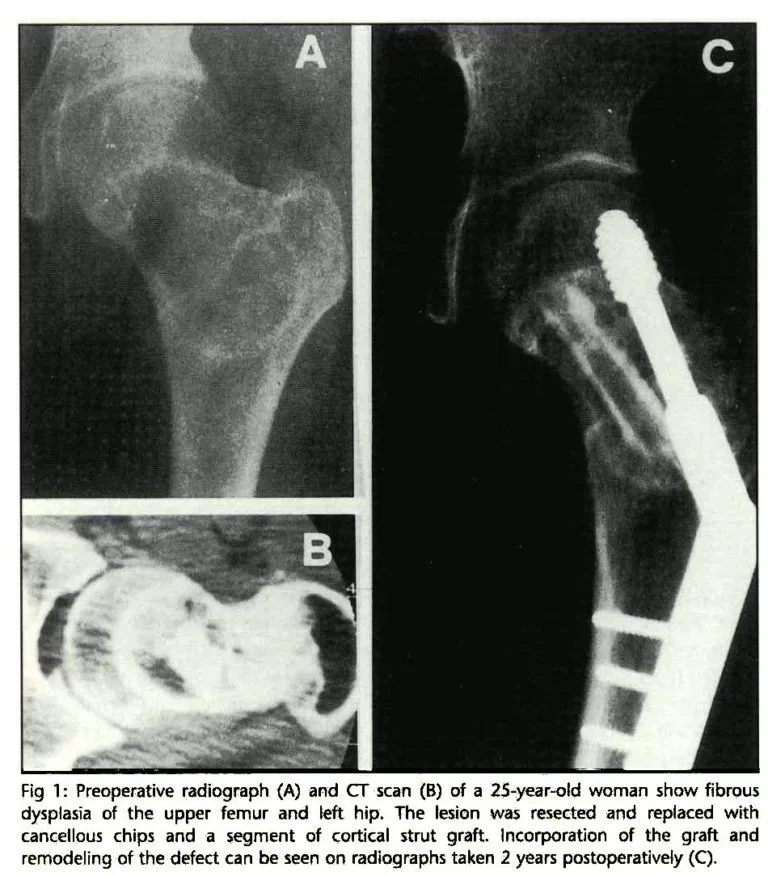
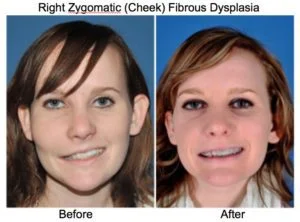
Physiotherapy Treatment
- Weight Bearing exercise like close kinetic chain exercise for the affected part
- Strengthening exercise for surrounding muscles
Postoperative treatment
- Counseling to reduce stress
- Relaxation exercises like Breathing Exercise
- Passive Range of Motion (ROM) Exercise
- Muscle strengthening exercise
- Exercise for the Prevention of Arthritis
- Ice Pack to reduce swelling
FAQs
Is fibrous dysplasia serious?
Fibrous dysplasia individuals can have little or no symptoms. However, the illness can sometimes be more serious and involve many bones. For the purpose of preventing or treating any fractures or deformities, these patients may require surgery to remove the damaged bone tissue.
What are the 4 types of fibrous dysplasia?
Types of fibrous dysplasia are:
Monostotic fibrous dysplasia: Monostotic fibrous dysplasia affects just one bone. Seven out of every ten cases are related to this.
Polyostotic fibrous dysplasia: Affected bones in polyostotic fibrous dysplasia include two or more.
McCune-Albright syndrome: Fibrous dysplasia in the McCune-Albright syndrome may be accompanied by hormonal imbalances and alterations in skin colour.What is the life expectancy of someone with fibrous dysplasia?
People with less severe forms of FD frequently have normal, healthy lives. The prognosis, which depends on the damaged bones, if other structures like nerves are affected, and whether fractures happen, is as diverse as the condition itself.
Is fibrous dysplasia curable?
People with less severe forms of FD frequently have normal, healthy lives. The prognosis, which depends on the damaged bones, if other structures like nerves are affected, and whether fractures happen, is as diverse as the condition itself.
What age does fibrous dysplasia start?
Children that develop fibrous dysplasia often do so between the ages of 3 and 15. With the exception of one specific variety of polyostotic fibrous dysplasia, McCune-Albright syndrome, which is more prevalent in girls and affects the bones, skin, and hormone levels, boys are more frequently diagnosed with fibrous dysplasia than girls.

